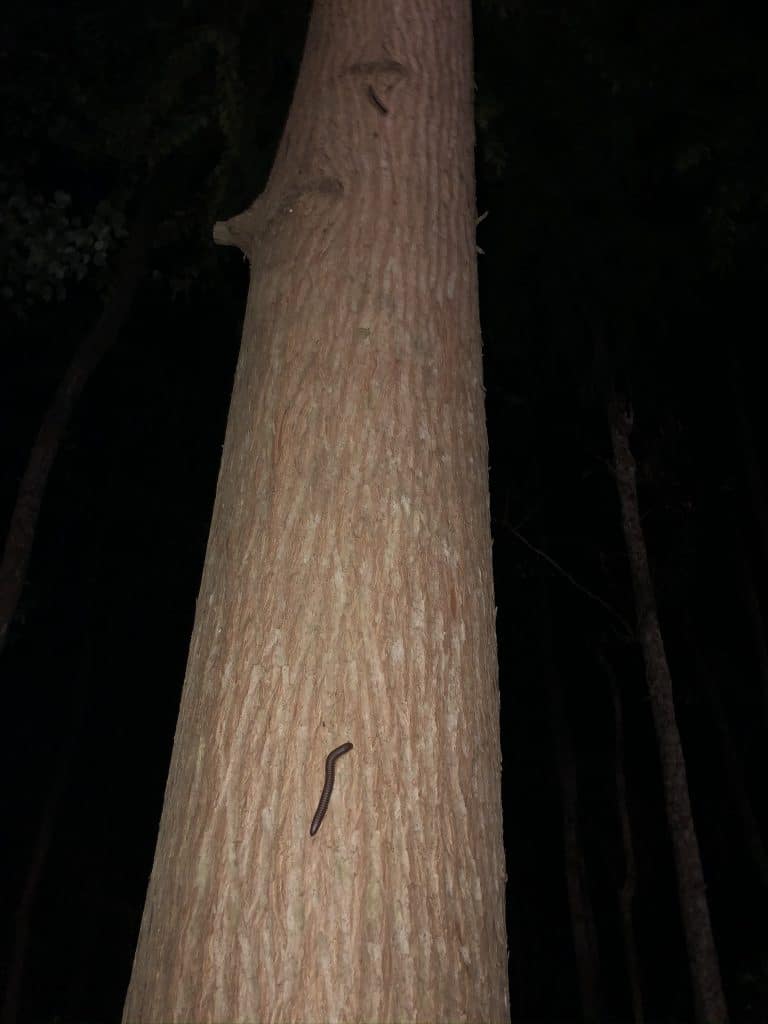Millipedes were counted as a prized find by our children growing up. They are equally special to our grandkids. Unlike the active Rolly Pollies lurking in the leaves, however, Pedes are found by flipping over flower pots or logs, where they lay curled up in a ball. Our kids and grands know that these curled up critters will “wake” up when held in a warm hand, to then crawl across their arms with their “thousand legs” – cue the giggles.
Millipedes are, after all, nocturnal by nature, as are many other common creatures in our world. We humans typically focus on creatures that are seen in the light of day, short of the moths and mosquitoes that come out at dusk or after dark, buzzing around the porch light, or horror of horrors, lighting up bug zappers (a subject for another day).

Narceus americanus is the largest native millipede in the U.S. and can be quite common. As many as a half dozen can be found in a square yard portion of any woodland or forested yard. They play an important part in the cycle of decomposition and are food for common small mammals like possums, moles, and mice, as well as toads and birds. But unless you look under leaf litter or logs during the daytime, you will not find many. Nighttime is their time.
Take a walkabout an hour after dark and look at the trunk of your trees for these and many other nocturnal creatures. Tree trunks are highways for daddy longlegs, roaches, spiders, and Giant Millipedes.
Hope to see you in our great outdoors!